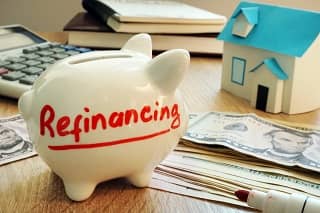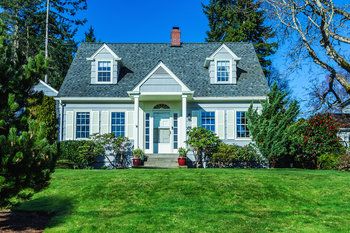When borrowers ask if they should consider refinancing into an adjustable-rate mortgage, my response is always akin to that old saying, “If the shoe fits, wear it.” While rising rate resets for adjustable-rate mortgages (ARMs) caught many inexperienced homeowners by surprise in the mid-2000s, ARMs remain an excellent, extremely-efficient loan product for the right borrower in the right situation.
With conforming ARM interest rates at never-before-seen levels, there are many borrowers out there who are tempted to either refinance into or back into an ARM. Of course, borrowers can still take advantage of historically-low mortgage rates and also alleviate future financial stresses by refinancing to a long-term, fixed-rate mortgage instead.
For the purposes of this discussion, let’s assume you took out a 5/1 ARM back in November 2005, or at the very least, your ARM is due to reset later this year.
Right now, initial 5/1 ARM rates are hovering around 3.55 percent, while 30-year fixed loans are about 4.51 percent. While these rates are attractive, your decision regarding what type of loan product to refinance into should be based on far more than just today’s interest rate, especially if you’re considering an adjustable-rate product.
Do you know where you’ll be in five years?
Knowing your time frame – how long you plan on staying in your current home -- is perhaps the most important factor when deciding whether or not to refinance into an ARM. After all, it’s a waste of money to pay all those refinance closing costs – typically equivalent to a couple percentage points of the new loan amount – if you aren’t going to live in the property long enough to recoup the cost of your refi. If you think that you will only be staying in your current property for another few years, then nabbing that 3.55 percent interest rate may be your best move.
However, plans change. (Don’t believe me, just ask Abby.) For most of us, knowing what we’re doing next weekend or next month is hard enough to predict, let alone three, four or five years from now. One of the main reasons borrowers refinance from an ARM to a fixed-rate mortgage is to hedge against future rate increases, since rising monthly payments could break your budget and even put your homeownership in jeopardy.
Rates can only go in one direction
With mortgage rates already at historic lows, there is really only one direction for rates to go -- over the long term -- and that’s up. So while you certainly have the opportunity to lock in a rate of 3.55 percent for the next five years, chances are that after that five-year window has closed, you’re possibly going to be in for a substantial rate and payment increase. Refinancing out of your ARM now and into a fixed-rate mortgage eliminates the risk of a huge and unfavorable change in market conditions.
Can you handle the payment increase?
While we can’t predict exactly what ARM rates will be in five years, we can say with certainty that rates will be higher than what they are right now. The uncertainty of rate increases can make budgeting for an ARM quite difficult. You have to ask yourself, “Can I handle an appreciable increase in my interest rate at some point down the road? Can I handle my monthly payments if my interest rate doubled? Am I prepared to potentially dedicate my savings to my mortgage if my payment jumps?”
Refinancing to a 3.55 percent interest rate is going to save you some extra cash each month, no question. If you don’t take at least some of those savings and bank them – preferably in a high-yield account – you could find yourself grossly unprepared when your rate resets. If you can save all or even some of those savings, you can build yourself a “mortgage subsidy account” on which you can draw upon if your payment should increase, ameliorating the effect on your budget to a real degree.
How your ARM works
You don’t have to be an economist to know interest rates will eventually rise. The way ARM interest rates are calculated makes it virtually impossible for ARM rates to fall too much lower than they are today, since the indexes which govern their movements are already historically-low. If you’re unclear on how your ARM works, be sure to read our comprehensive Guide to Adjustable Rate Mortgages.
Crunch the numbers
The break-even analysis for refinancing from an ARM to a fixed rate mortgage is different from that of a “regular” interest-rate-reduction refi because at least some of your savings is determined by future interest rates, and of course you don't know what they will be.
If you’re a borrower who is coming up to your ARM reset -- we used the example earlier of a 5/1 ARM taken out in November 2005 – your interest rate should currently be about 5.87 percent. If your ARM reset today, your interest rate would fall to around 3 percent, certainly complicating your decision. Do you trade that short-term, low-reset rate for a longer-term, higher-rate refinance? Savings versus stability? Hard to decide. If you decide to hang onto your ARM, you should be aware that due to the way most ARM reset caps are constructed, you won’t be facing much more than a 2 percent increase next year, bringing your interest rate back up to perhaps 5 percent. However, after that, predicting your costs gets more and more difficult.
What’s your time frame?
If you’re still not sure whether you should refinance your ARM, here are some time frames to consider that could help make your decision a little easier:
The long haul: If you plan on being in your home for over six years, refinancing to a fixed-rate loan is probably the best choice. If you stick with your present ARM, your interest rate could increase up to nearly 11 percent over the next few years.
The “mid haul”: If you’re only going to remain in your property for three to five years, refinancing into a new five- or seven-year ARM is probably your best move. You want to stay in your home long enough so that your new, lower interest rate allows you to recoup your closing costs. Plus you’ll have protection against rate increases.
Short term: If you only plan to stay in your home for another one to three years, refinancing probably isn’t in your best interest. Yet, be prepared for rates of 5 and maybe 7 percent over the next few years.
Related links :



